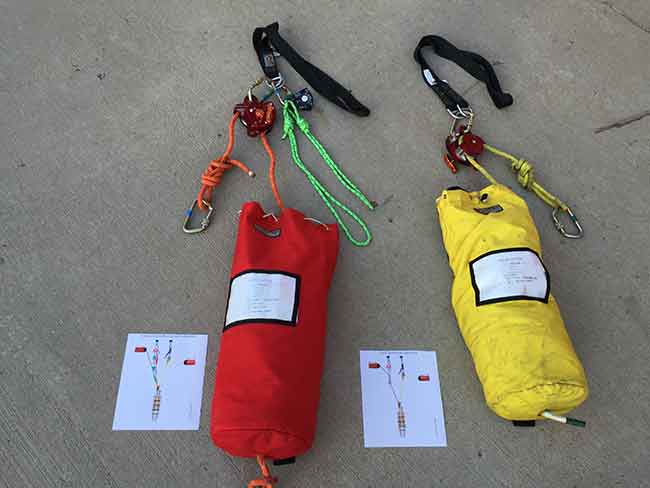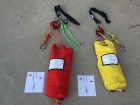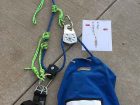
Equipment
Tim-Bits: January 2016
When I set out to write Tim-Bits, I try to pick a topic that centres on modifications I’ve learned over my years of fire fighting that simplify an ordinary task. This column, however, is a bit of a stretch; I’m going to broach the topic of technical rescue.
February 1, 2016
By Tim Llewellyn
 but some firefighters struggle to learn the basics of tying knots. Tim Llewellyn suggests a simple way to build pre-rigged rope systems.
but some firefighters struggle to learn the basics of tying knots. Tim Llewellyn suggests a simple way to build pre-rigged rope systems.First, a disclaimer: I am not a technical rescue guru. I’ve taken courses and have passed international-certification examinations, but by no means do I consider myself to be a rope guy. I’m confident enough to say that I could be a part of a technical-
rescue crew, but am not a specialist. And, with a few exceptions, neither are the rest of the firefighters in my department.
Most fire departments have some type of rope-rescue equipment; the ropes are stored in rope bags and the hardware and software in other bags. When the equipment is needed, the bags are laid out and systems are built. The rationale behind this is simple – when the rescuers need to build a hauling or lowering system, they can choose the equipment they need to build what the situation requires.
One of the problems we find when we train our staff on rope rescue is that most of the firefighters who struggle also fail to grasp the very basics – tying knots and building mechanical-advantage systems. Once the systems are built, running the system is not a problem for those firefighters: hauling, setting the brakes, lowering, belaying, and so on. The trouble for many firefighters, despite regular training, is figuring out knots and systems. It turned out that in our department, the bags of loose equipment created too much confusion for our staff, which is largely made up of non-rope guys, like me.
The solutions to our problem are twofold: first, continue to challenge and educate our firefighters through basic, realistic rope-centered trainings; and second, create functional, purpose built, pre-rigged rope and equipment bags that contain the most commonly needed systems.
Each bag we’ve created is colour coded and contains the equipment necessary to perform a functional task: black bags contain a 4:1 hauling system; blue bags contain a 3:1 hauling system or z-rig; red bags are lowering systems; yellow bags are belay lines; and orange bags contain just life-safety rope. Each of the bags has a label that identifies the contents and also lists the specific pieces of equipment contained. The bags also contain a laminated diagram of the system and the most commonly associated other system that will be needed for safe operation.
The bags are packed in a way that makes removal and use of the contents as easy as possible. The rope is stuffed in the bag in the typical fashion and the constructed systems are held by the anchor strap. With the help of another firefighter, the system is shortened – slack is taken out of the pulleys as much as possible. Next, each piece of the system is carefully laid in the bag on top of the bulk of the rope. Finally, the anchor strap is packed, with a small tail of the anchor strap loop hanging out of the bag. The bag is then fastened around the anchor-strap loop, which holds it in place.
When the system needs to be removed from the bag for use, the firefighter simply grasps the anchor strap loop, opens the bag and lifts the system out of the bag. This enables easy removal of the system and quick identification of the different components for attachment to an anchor point or the load. We make sure that our firefighters know it is imperative that the systems are load checked and knot checked prior to placing any life load on them. (It is possible that pre-tied knots may loosen in storage over time – they need to be checked and tightened before use.)
Pre-rigged systems such as these might not be for everyone. But for us, we’ve taken what was a stumbling block, eliminated a few steps and made it possible for our firefighters to get systems into use faster. Our rope guys have even stated that the systems are placed in service a lot faster than building the systems manually. If you think your department might benefit from pre-rigged systems, give them a try. Now go tie some knots!
Tim Llewellyn is a firefighter for the Allegheny County Airport Authority in Pittsburgh, Pa., and an instructor for a number of fire academies and training faculties.
llewellyn.fire@gmail.com
Print this page

